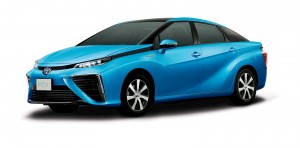As the world switches from petroleum fuels to lithium batteries in electric vehicles, do we need to worry about creating a new Middle East-type cartel that can once again hold the world’s energy supply hostage? The concern might have some justification, as just four countries have the largest reserves of lithium (Australia, Chile, Argentina and China). Chile, in particular, is thought to have more than 50% of known economic reserves.
The Conversation describes where battery raw materials come from, and concludes somewhat positively:
The supply of major materials for lithium batteries is not under threat any time soon, but demand is likely to open up new areas for extraction, bringing new risks.
The political situations of countries with large reserve shares and large shares in the processing of these metals can quickly become uncertain. Will countries like Bolivia allow unrestricted export of lithium? Will Democratic Republic of Congo or China restrict cobalt supply?
Environmentally, the lithium-ion battery’s future is also worrying. The production of electrode materials may become more environmentally damaging. On the other hand, the impact of the lithium supply itself is likely to improve.
Ultimately, recycling lithium should play a part in mitigating political, environmental and economic risks in the future, but high rates of lithium battery recycling are yet to be seen.
It’s always a risk once we become overly dependent on one source of energy (or in this case, energy storage) that it will lead to national security issues with foreign control over those resources.
But it’s worth noting that the U.S. has its own supply of lithium, and also that current estimates from the U.S government at least indicate an adequate worldwide supply to meet demand (although Greentech Media raises some alarm bells on this question).
Ultimately, this is a long-term potential problem that can likely be addressed with further innovation in manufacturing, battery development, and recycling and reuse of existing batteries. And it’s certainly not a reason to avoid investing in battery electrification of transportation.
But at the same time, if I was working in national security, it would be an issue to track going forward.
For those who missed the UCLA Law lunch event to launch the new EV charging report “Plugging Away: How to Boost Electric Vehicle Charging Infrastructure,” the video recording is now available.
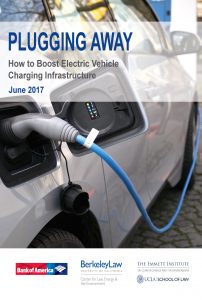 The event featured a keynote address by The Honorable Janea Scott, Commissioner, California Energy Commission, as well as panel presentations by:
The event featured a keynote address by The Honorable Janea Scott, Commissioner, California Energy Commission, as well as panel presentations by:
- Tyson Eckerle, Office of Governor Jerry Brown, Business and Economic Development (GO-Biz)
- Terry O’Day, EVgo
- Dean Taylor, Southern California Edison
With the recent news that Volvo will be moving exclusively to models with plug-in batteries by 2019, the need for more EV charging stations will become even more pressing.
The report was also the subject of recent media coverage by KPCC radio in Los Angeles and NPR Marketplace Weekend (episode “Bad Movies and Good Wages” at 19 minutes in).
UPDATE: video of the lunch event is now available on YouTube:
City dwellers in apartment buildings who lack dedicated parking spaces are sort of out of luck when it comes to owning an electric vehicle. As a possible remedy, I’ve mused before about the possibilities of installing public charging stations on city streetlights.
Now it looks like the city of Lancaster in California’s desert is moving forward with a pilot program, as ChargedEVs reports:
The City of Lancaster, California has launched a demonstration project that will integrate chargers into five streetlights in the trendy downtown district. The charging units are made by ebee Smart Technologies, a specialist in controller technology designed to make installing public charging cheaper and more flexible. The company has installed some 10,000 of its controllers in chargers in Europe.
A grant from the Antelope Valley Air Quality Management District will cover 80% of the project cost, including installation, maintenance, and five years of data collection. The remaining 20% will be covered by ebee and its partners, EasyCharge and eluminocity, which created the charger housings.
 If it can work in Lancaster, maybe it can work in densely populated downtowns anywhere around the world. Because otherwise these residents are victims of inadequate charging infrastructure, as Berkeley and UCLA law schools covered in our new report “Plugging Away: How to Boost Electric Vehicle Charging Infrastructure.”
If it can work in Lancaster, maybe it can work in densely populated downtowns anywhere around the world. Because otherwise these residents are victims of inadequate charging infrastructure, as Berkeley and UCLA law schools covered in our new report “Plugging Away: How to Boost Electric Vehicle Charging Infrastructure.”
And this infrastructure deployment can’t happen soon enough, with automakers like Volvo now announcing that they’re abandoning internal combustion engines by 2019.
The electric drive revolution is here, but it will falter without more investment in options like streetlight charging, for all those who live in buildings without dedicated parking.
Good news from Tesla about the country’s independence — from petroleum as the primary transportation fuel, per the San Francisco Chronicle:
Electric auto maker Tesla plans to deliver the first of its long-awaited $35,000 Model 3 sedans on July 28th and expects to build 20,000 of the cars per month by the end of the year, CEO Elon Musk revealed late Sunday.
The company aims to produce 100 cars in August, 1,500 in September, and 20,000 in December.
The 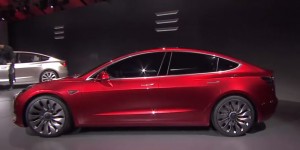 advent of this car on the market means there will now be two EVs that can go over 200 miles on a single charge at less than $40,000 (really closer to $30,000 with incentives): the Chevy Bolt and now the Model 3. Those prices aren’t cheap, but they aren’t expensive either, especially when considering the low maintenance and fuel costs (at least if you fuel at home in your garage).
advent of this car on the market means there will now be two EVs that can go over 200 miles on a single charge at less than $40,000 (really closer to $30,000 with incentives): the Chevy Bolt and now the Model 3. Those prices aren’t cheap, but they aren’t expensive either, especially when considering the low maintenance and fuel costs (at least if you fuel at home in your garage).
The big question to me will be reliability: the Models S and X from Tesla have had a lot of quality control problems for drivers. Those high-end consumers tend to be okay with the hassle. But with the Model 3, consumers won’t be as forgiving if the car has to be in the shop a lot for small fixes.
And the second question: will Tesla actually be able to achieve its production targets? It’s a good sign that the company is two weeks early with the start of production, but historically they’ve had challenges getting their manufacturing and supply chains together.
This model will truly be a make-or-break test for the company, if it’s to fulfill the vision of becoming a major global automaker and bring EVs to dominance.
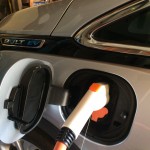 Electric vehicles (EVs) represent one of the most promising clean technologies, in terms of their potential benefits for the electricity grid, local air pollution, and reducing the greenhouse gas emissions that cause climate change. Not to mention they’re fun to drive.
Electric vehicles (EVs) represent one of the most promising clean technologies, in terms of their potential benefits for the electricity grid, local air pollution, and reducing the greenhouse gas emissions that cause climate change. Not to mention they’re fun to drive.
The good news is that as EV prices have dropped by nearly half the last few years, the number of Californians driving them has gone way up, with almost 300,000 EVs now on the state’s roads (up from about 10,000 just five years ago). The batteries in these vehicles can be used to soak up surplus renewable energy, and the use of electricity instead of petroleum as a fuel means significant reductions in air pollution and greenhouse gas emissions.
But all this progress is threatened by the lack of reliable and accessible charging stations, particularly for the 40 percent of Californians who live in apartments, townhouses, and condominiums without dedicated on-site parking spaces with charging capability (including even just a simple wall outlet).
Researchers estimate that California may need up to 220,000 publicly accessible charging ports by 2020 to meet projected demand, way beyond the roughly 12,000 available today. Hundreds of thousands of additional charging stations may be necessary at those multi-unit dwellings.
Private investment alone won’t be enough to make it happen: the business model for charging stations is currently not strong enough to attract sufficient private capital. Simply put, many charging stations are too expensive to build and operate right now, without dependable near-term revenue to cover costs and produce a profit.
“Plugging Away” Report Releasing Today
 To address the challenge, UC Berkeley and UCLA Law convened experts from the EV charging sector in 2016, including automakers, utilities, and charging companies, as well as government officials, academics, and nonprofit advocates.
To address the challenge, UC Berkeley and UCLA Law convened experts from the EV charging sector in 2016, including automakers, utilities, and charging companies, as well as government officials, academics, and nonprofit advocates.
Based on those discussions, the law schools are today releasing the new report “Plugging Away: How to Boost Electric Vehicle Charging Infrastructure.” It is the eighteenth report from our Climate Change and Business Initiative, generously supported by Bank of America since 2009.
Among a number of detailed solutions, the report recommends:
- More robust and strategic electric utility investments in charging infrastructure, at least for any new wiring to the charging station, in key locations such as workplaces, multi-unit dwellings, and fast-charge “plazas” to stimulate maximum EV convenience and adoption;
- Revised commercial electricity rates to encourage charging at the right places and times to best meet grid needs, including options to reduce high demand charges related to peak usage at remote fast-charging sites; and
- Targeted rebates and grants for office and multi-unit dwelling building owners to install charging stations, as well as expedited permitting to allow more curbside charging.
Free Lunch Event & Webcast at UCLA Law, Noon to 1:30pm
To launch the report, UCLA Law is hosting a free lunch event from noon to 1:30pm today, featuring a keynote by California Energy Commissioner Janea Scott and a panel including:
- Tyson Eckerle, Governor’s Office of Business and Economic Development (GO-Biz)
- Terry O’Day, EVgo
- Dean Taylor, Southern California Edison
For those not in the Los Angeles area or unable to attend in person, the event will be webcast live.
I hope you can tune in or join. With a more robust and reliable charging network, policy makers and businesses can help ‘pave the way’ to more electric vehicle adoption in California and beyond.
Sure, electric vehicles are fun to drive, reduce local air pollution and greenhouse gas emissions, and can save you a lot of money on fuel at the same time. But are they safe?
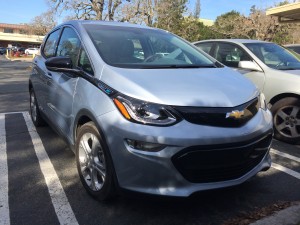 We know the Tesla Model S achieved the highest safety rating ever recorded by the federal government, mostly because of the lack of front engine block. As a result, the car has a huge crumple zone for cushion in the result of a front-end impact.
We know the Tesla Model S achieved the highest safety rating ever recorded by the federal government, mostly because of the lack of front engine block. As a result, the car has a huge crumple zone for cushion in the result of a front-end impact.
But what about the non-premium electric vehicles, particularly the new long-range, mass-market Chevy Bolt EV? The federal government has not released crash test information yet on this car, but a new safety test looks very promising, per cars.com:
Chevrolet’s all-electric car is the first of its kind to earn high safety scores from the Insurance Institute for Highway Safety. The safety group gave the 2017 Chevrolet Bolt EV the Top Safety Pick nod, one test short of its highest rating.
The electric hatchback earned good ratings in all five crash tests, including small overlap front, moderate overlap front, side, roof strength and head restraint evaluations; the Bolt’s optional front crash prevention system earned a superior rating. According to IIHS, the Bolt automatically avoided a crash in tests at both 12 and 25 mph.
Evidently the only knock on the car is the glare from its headlights. Meanwhile, the Nissan LEAF did not fare as well.
Like any car, design is important for safety. But the fact that EVs don’t have big engine blocks in front clearly gives them a strong advantage in this respect. It’s yet one more reason for consumers to consider making the switch from gas to electricity to power their vehicles.
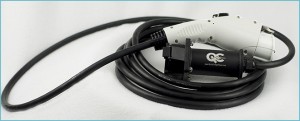 Electric vehicles are good for the environment not just because they decrease petroleum fuel burning, but because the batteries in the vehicles can help support a cleaner grid. To test that concept, BMW signed up drivers of their electric i3 vehicle for a project with Pacific Gas & Electric in the Bay Area. The basic goal was to reduce demand from a fleet of vehicles at a time when the grid was constrained, by activating software in the vehicles to halt charging for up to an hour.
Electric vehicles are good for the environment not just because they decrease petroleum fuel burning, but because the batteries in the vehicles can help support a cleaner grid. To test that concept, BMW signed up drivers of their electric i3 vehicle for a project with Pacific Gas & Electric in the Bay Area. The basic goal was to reduce demand from a fleet of vehicles at a time when the grid was constrained, by activating software in the vehicles to halt charging for up to an hour.
The upside for drivers who participated? They got $1000 for signing up, plus as much as $540, depending on how many days they did not manually opt out of the program. Drivers were notified by a software app when a delay was about to happen and could use it to opt-out if needed.
In practice, that meant eight delays in charging over the 18-month pilot period for the typical driver. However, some vehicles, based on when they were plugged in and how little they opted out, had more delays. Of the 100 participating drivers, for example, three vehicles participated in over 50 events.
If it sounds like a good deal, that’s because it is. In fact, 500 drivers ended up applying for just 100 spots in the pilot. The report did not mention if the payments were cost-effective from a ratepayer standpoint (I suspect not). In other words, could that electricity have been more cheaply supplied or reduced elsewhere? But given that this was a pilot, it was important to get data and participation first.
During the 18 months (from July 2015 to December 2016), PG&E asked BMW 209 times to “provide capacity of 100 kW over an hour-long period.” This is actually a lot of times. As a point of comparison, residential “demand response” (as this kind of moderated demand is called) programs are capped at 15 events per year.
Ultimately, BMW met 90% of the events. The reason for the failings was mostly due to technical problems, which apparently got fixed as the pilot went on. And the response time to actually delay the charging once the utility sent the signal was 2.3 minutes on average, which was fine for the day-ahead market and not bad for the real-time market, which requires 4 minutes at most of delay. The lag was mostly due to communications issues that seemed to get fixed as the pilot unfolded.
Drivers seemed not to mind the delays. The most opt outs for any one event was on Thursday, October 14, 2015 at 11 PM, when three customers opted out. The majority of events had no opt-outs and only two participants opted out for more than two events over the entire pilot. Meanwhile, 95% of the drivers surveyed said that they never, or rarely, had to change driving or charging behaviors. Ultimately, 98% indicated they were satisfied with the experience.
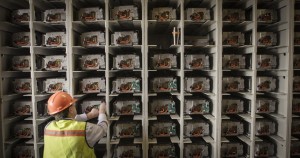 But there was one relatively big hitch to the findings: not enough EV drivers were plugged in at any given moment to meet the demand response events. As a result, BMW had to rely on “second-life” used electric vehicle batteries to meet almost 80% of the power requested during these events. The vehicles on average supplied the other 20% of the demand reduction.
But there was one relatively big hitch to the findings: not enough EV drivers were plugged in at any given moment to meet the demand response events. As a result, BMW had to rely on “second-life” used electric vehicle batteries to meet almost 80% of the power requested during these events. The vehicles on average supplied the other 20% of the demand reduction.
Possibly because of time-of-use rates and cheap off-peak power, many drivers did not plug in until after 9pm. As a result, these drivers simply missed any demand response events happening during the daytime or early evening. In fact, only 37% of the drivers charged at work during the day, due to the lack of availability of chargers at their place of employment.
Meanwhile, the drivers that were able to participate in the top 10%:
[A]re characterized as frequent drivers, who have regular charging patterns and are not on a [time-of-use] rate. These drivers habitually plug in and begin charging around 8 PM in the evening and typically charge for about 3 hours. Since a majority of the events were called from 8–9 PM, these vehicles were frequently called upon and able to participate.
So in the long run, more workplace charging and electricity rates that encourage demand response participation could address these challenges.
Meanwhile, the benefits to the grid look very promising. Each vehicle contributed 4.43 kw of demand response delayed usage. It may not sound like much, but assuming by 2030 the state has 1.2M electric vehicles, with 250,000 drivers enrolled in this kind of program and 17,000 participating in a demand response event:
[T]he potential load drop of a single event in 2030 is about 77.6 MW, which is enough to power approximately 58,000 homes in California. Thus, on a larger scale, a similar program has the potential to provide a significant resource.
So while more work remains to be done, this pilot project is overall very encouraging. Coupled with reforms related to boosting workplace charging and improving electricity rates (the subjects of a forthcoming report from UC Berkeley and UCLA Law), this kind of demand response could be very beneficial for the state.
And it could put a healthy dollop of cash in EV drivers’ wallets to boot.
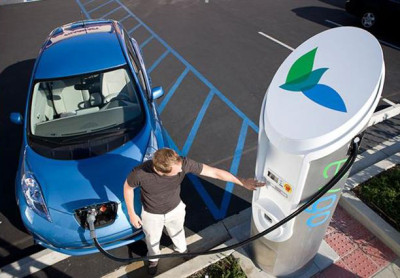 Few clean technologies are as central for meeting climate change goals as electric vehicles. Yet in places like California, which leads the U.S. with approximately 300,000 EVs on the road, the needed charging infrastructure is lagging.
Few clean technologies are as central for meeting climate change goals as electric vehicles. Yet in places like California, which leads the U.S. with approximately 300,000 EVs on the road, the needed charging infrastructure is lagging.
Analysts estimate that the state will need as many as 220,000 publicly accessible EV charging ports by 2020 to meet demand, well beyond the roughly 12,000 available in the state today. So how will California meet this challenge?
Join the UCLA and UC Berkeley Schools of Law for a free lunchtime forum on policy options to boost California’s EV charging infrastructure on Thursday, June 29th at UCLA Law. The two law schools will release a major joint report at the event as part of the Climate Change and Business Research Initiative, entitled “Plugging Away: How To Boost Electric Vehicle Charging Infrastructure.”
WHEN: Thursday, June 29th, 12 noon to 1:30 p.m. (registration and lunch begin promptly at 11:30am).
WHERE: Room 1447, UCLA School of Law, 385 Charles E Young Drive, Los Angeles, CA 90095
Keynote Address:
The Honorable Janea Scott, Commissioner, California Energy Commission
Panel presentations:
- Tyson Eckerle, Office of Governor Jerry Brown, Business and Economic Development (GO-Biz)
- Terry O’Day, EVgo
- Dean Taylor, Southern California Edison
RSVP by Friday, June 23rd. Space is limited, and MCLE credit is available.
Funding for the Climate Change and Business Research Initiative is generously provided by Bank of America.
The more I learn about hydrogen fuel cells as a potential alternative (or competitor) to battery electric vehicles, the more confused I become.
Hydrogen as a fuel source (as opposed to electricity) is much more energy intensive to produce and much less efficient as a result, given the energy input to make the hydrogen that will power the vehicle. It also requires building an entirely new fueling infrastructure to reach drivers, whereas electricity is ubiquitous (although does require a lot of new charging stations).
Hydrogen also isn’t cheap (per paywalled Greenwire):
Hydrogen fuel-cell vehicles could offer advantages over the electric cars on the road now, including higher travel distances between refuelings. Filling up the tank is basically the same as filling a car with gasoline, and in California, most hydrogen pumps are at existing gas stations. While the hydrogen fuel is significantly more expensive — filling a tank costs about $75 — Toyota and Honda give their customers credit for $15,000 worth of fuel over three years of ownership.
So why the big push for hydrogen in places like California, when battery electric vehicles have taken hold with billions of investment from companies around the world?
The answer appears to be Japan, and the automakers in that country, specifically Toyota and Honda. States like California have had to include hydrogen incentives in packages with battery electric vehicles in order to get the political buy-in from these Japanese automakers.
So with all the hurdles associated with hydrogen fuel cells, why is Japan so invested in the technology? Per ClimateWire (also pay-walled):
A big part of the answer is that the shift toward hydrogen plays to Japan’s strengths as a technology developer and exporter, and the country makes an ideal laboratory to test the hydrogen economy.
The country spends more than $100 billion on foreign oil every year, and fuel prices tend to be high, so hydrogen fuel doesn’t have to be as cheap as it does in other countries to compete. More than 93 percent of Japan’s population is concentrated in urban areas, so fewer fueling stations are needed to sustain a hydrogen fleet than among populations that are more spread out.
For drivers, a fuel cell fill-up takes only a few minutes, compared with hours of charging for a battery-electric vehicle.
Another factor is that much of the supply chain for the hydrogen economy is domestic, and Japanese companies like Toyota have a track record of bringing fuel-efficient cars to the masses.
In particular, Toyota has built the Prius, a mass-market hybrid gasoline-electric car that has dominated the segment for more than 20 years. It took 10 years to sell the first million units, then two years to sell the second million.
With patience and know-how, Toyota hopes to replicate some of that success in fuel cells in Japan and in other parts of the world where energy prices, environmental concerns and driving styles align to make fuel-cell-powered cars a preferable option.
I suppose it’s fine to have another “clean” vehicle technology in the mix, in case breakthroughs help it leapfrog battery electric vehicles. But I would prefer that policy makers don’t share too much of the limited available incentive dollars with this technology and instead focus on the more optimal solution.
Tesla’s tiled solar panel roof made a big splash when Elon Musk unveiled it last year (photo to the right). But the roof comes at a pretty steep price, as Bloomberg reports:
A Tesla solar roof will also lose some of the energy-generating density of a traditional panel, because the cells must be spaced farther apart to account for the edges of the tiles, BNEF’s Bromley said. Therefore, the percentage of the roof that will be covered by active solar cells will be higher, as will the total cost of the roof. All told, a traditional solar setup might be 30 percent cheaper than a Tesla roof, he said, but Tesla’s will look better and come with a lifetime warranty. “A 30 percent premium could well be acceptable.”
“It is the most affordable roof you can buy, all things considered,” said Peter Rive, co-founder of Tesla’s recently acquired SolarCity division.
Perhaps the extra cost is worth it in terms of getting a new roof and possibly not having the visual impacts of a traditional solar array (I personally don’t mind the look of traditional solar panels, but some people do, which could decrease home values I suppose). But only so many homes need a new roof at a given time, so right away the market seems limited.
There also may be technical issues with this new type of technology. I talked to a solar engineer recently who thought the tiles would have problems without having the cooling air space underneath, like with traditional mounted panels. The extra heat would supposedly hinder the lifespan and energy production value. I don’t know how to evaluate that claim or whether or not Tesla has addressed it, but it points to concerns people may have with adopting a new form of the technology.
I like the idea of Tesla combining with SolarCity to package clean energy and energy storage together with the vehicles, but the solar roof concept may have a rocky start.

